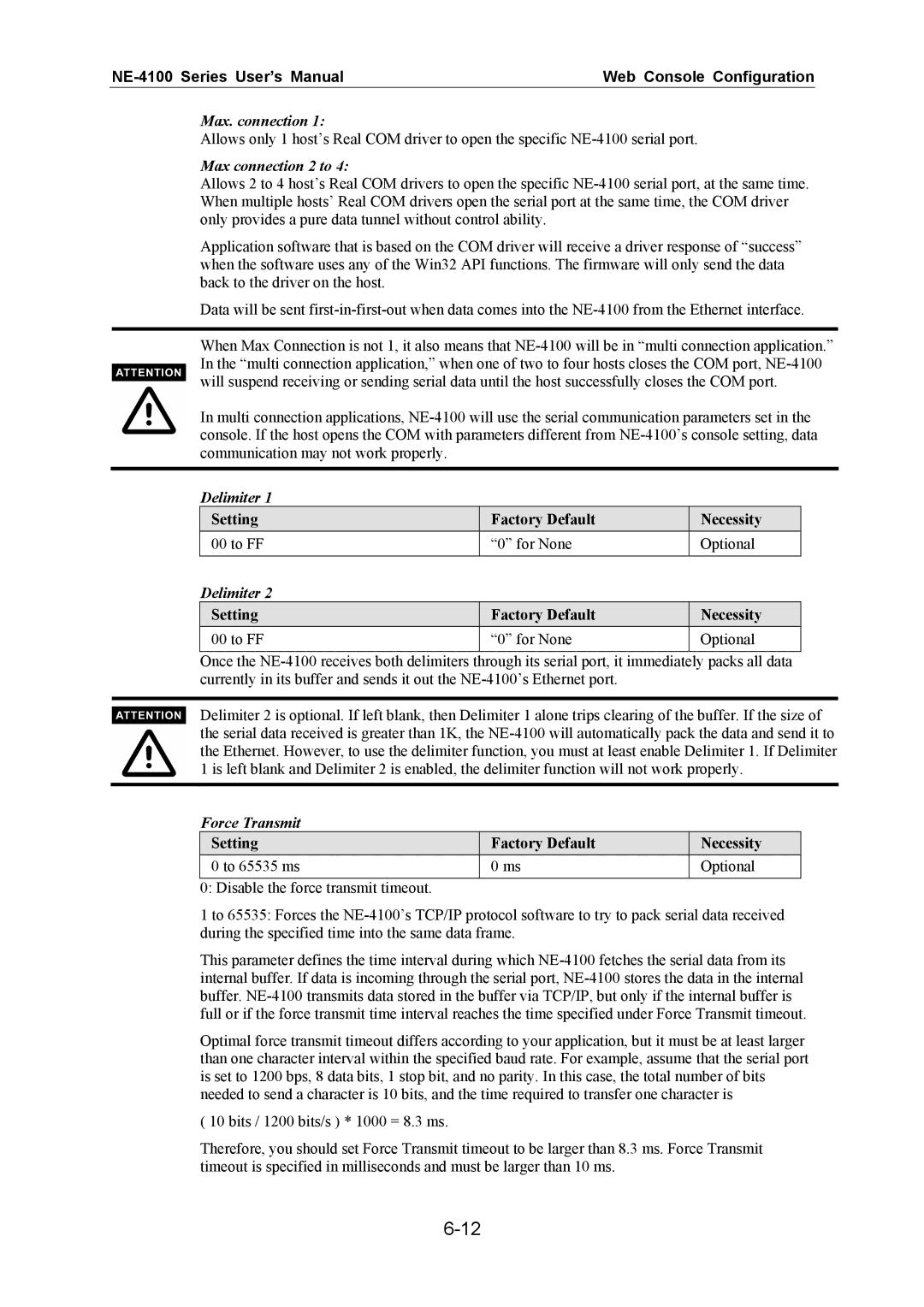
| Web Console Configuration |
Max. connection 1:
Allows only 1 host’s Real COM driver to open the specific
Max connection 2 to 4:
Allows 2 to 4 host’s Real COM drivers to open the specific
Application software that is based on the COM driver will receive a driver response of “success” when the software uses any of the Win32 API functions. The firmware will only send the data back to the driver on the host.
Data will be sent
When Max Connection is not 1, it also means that
In multi connection applications,
Delimiter 1
Setting | Factory Default | Necessity |
00 to FF | “0” for None | Optional |
|
|
|
Delimiter 2 |
|
|
Setting | Factory Default | Necessity |
00 to FF | “0” for None | Optional |
|
|
|
Once the
Delimiter 2 is optional. If left blank, then Delimiter 1 alone trips clearing of the buffer. If the size of the serial data received is greater than 1K, the
Force Transmit
Setting | Factory Default | Necessity |
0 to 65535 ms | 0 ms | Optional |
0: Disable the force transmit timeout.
1 to 65535: Forces the
This parameter defines the time interval during which
Optimal force transmit timeout differs according to your application, but it must be at least larger than one character interval within the specified baud rate. For example, assume that the serial port is set to 1200 bps, 8 data bits, 1 stop bit, and no parity. In this case, the total number of bits needed to send a character is 10 bits, and the time required to transfer one character is
( 10 bits / 1200 bits/s ) * 1000 = 8.3 ms.
Therefore, you should set Force Transmit timeout to be larger than 8.3 ms. Force Transmit timeout is specified in milliseconds and must be larger than 10 ms.
